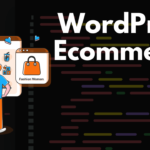Crafting a successful online presence hinges on many factors, but one of the most crucial is SEO link building. Think of it as the digital equivalent of networking; it’s about building relationships and gaining endorsements from other credible websites. This isn’t just about quantity; it’s about quality. A single high-authority link can be more valuable than hundreds of low-quality ones. In this comprehensive guide, we’ll delve into the world of SEO link building, covering strategies, best practices, and how to avoid common pitfalls. Let’s get started on building a robust backlink profile that boosts your website’s rankings.
What is SEO Link Building?
Understanding Backlinks
Link building is the process of acquiring hyperlinks from other websites to your own. These hyperlinks, called backlinks, are essentially votes of confidence. Search engines like Google interpret these votes as a signal that your website is a valuable and trustworthy resource. The more high-quality backlinks you have, the more authority your website gains, and the higher it’s likely to rank in search engine results pages (SERPs).
- Backlinks are a key ranking factor for search engines.
- They indicate to search engines that your content is valuable.
- High-quality backlinks improve your website’s authority and credibility.
Why is Link Building Important?
Link building is essential for a number of reasons:
- Improved Search Engine Rankings: Backlinks are a strong signal to search engines, helping them understand your site’s relevance and authority for specific keywords.
- Increased Website Traffic: Backlinks can drive referral traffic from the websites that link to you.
- Faster Indexing: Search engine crawlers use backlinks to discover new web pages, which means that acquiring backlinks can lead to faster indexing of your content.
- Brand Building: Earning links from reputable websites can increase your brand’s visibility and credibility.
Types of Link Building Strategies
Organic Link Building
Organic link building happens naturally when you create valuable, high-quality content that others want to share and link to. This is the most sustainable and long-term approach to building a strong backlink profile.
- Create high-quality, informative content: Blog posts, guides, infographics, and videos that are valuable to your target audience.
- Optimize your content for search engines: Use relevant keywords, optimize meta descriptions, and ensure your content is easy to read and navigate.
- Promote your content on social media: Share your content on social media platforms to reach a wider audience and increase the chances of it being shared and linked to.
Outreach Link Building
Outreach link building involves actively reaching out to other websites and asking them to link to your content. This can be a more time-consuming approach, but it can be highly effective when done correctly.
- Identify relevant websites: Find websites in your niche that are likely to be interested in your content.
- Find contact information: Use tools like Hunter.io or LinkedIn to find the contact information of the website owner or editor.
- Craft a personalized outreach email: Introduce yourself and your website, explain why your content is valuable, and ask them to consider linking to it.
- Offer value: Offer to write a guest post, provide a testimonial, or share their content on social media in exchange for a backlink.
- Example: Let’s say you’ve written a comprehensive guide on “Beginner’s Guide to SEO.” You could reach out to relevant marketing blogs and offer to contribute a guest post or update an existing article with a link to your guide as a valuable resource.
Broken Link Building
Broken link building involves finding broken links on other websites and offering your content as a replacement. This is a win-win situation: you get a backlink, and the website owner fixes a broken link on their site.
- Find broken links: Use tools like Ahrefs or Semrush to find broken links on websites in your niche.
- Analyze the broken link: Determine what the broken link was pointing to and whether your content is a suitable replacement.
- Contact the website owner: Let them know that you found a broken link on their site and offer your content as a replacement.
- Example: If you find a broken link on a popular photography blog that was previously linking to a tutorial on “Taking Stunning Landscape Photos,” and you have a similar, updated tutorial on your website, you can reach out and offer your content as a replacement.
Resource Link Building
Resource link building involves creating a valuable resource (such as a directory, list, or tool) and promoting it to relevant websites. This is a great way to attract backlinks from websites that are looking for high-quality resources.
- Identify a need: Find a gap in the market for a valuable resource in your niche.
- Create a high-quality resource: Develop a resource that is comprehensive, accurate, and easy to use.
- Promote your resource: Reach out to relevant websites and let them know about your resource.
- Example: Creating a free SEO audit tool and promoting it to marketing websites and agencies.
Best Practices for SEO Link Building
Focus on Quality Over Quantity
It’s better to have a few high-quality backlinks from reputable websites than hundreds of low-quality backlinks from spammy sites. Focus on earning backlinks from websites that are relevant to your niche, have high domain authority, and have a good reputation.
- Domain Authority (DA): Aim for links from sites with high DA (use tools like Moz’s Link Explorer).
- Relevance: Ensure the linking site is relevant to your industry or niche.
- Trustworthiness: Avoid links from spammy or low-quality sites.
Create High-Quality Content
The foundation of any successful link building strategy is high-quality content. Create content that is informative, engaging, and valuable to your target audience. The better your content, the more likely people are to link to it.
- Original Research: Conduct and publish original research to make your content unique and valuable.
- In-depth Guides: Create comprehensive guides that cover a topic in detail.
- Infographics: Visually appealing infographics can attract a lot of shares and backlinks.
Diversify Your Backlink Profile
A diverse backlink profile is a sign of a healthy website. Avoid getting all your backlinks from the same type of website or using the same anchor text for all your links.
- Different Types of Websites: Aim for links from blogs, news sites, industry directories, and more.
- Varied Anchor Text: Use a mix of branded, keyword-rich, and generic anchor text.
- Different Domain Authorities: While high DA links are desirable, don’t neglect links from smaller, niche sites.
Monitor Your Backlink Profile
Regularly monitor your backlink profile to identify any harmful backlinks and disavow them using Google Search Console. This will help protect your website from negative SEO attacks.
- Use Backlink Analysis Tools: Tools like Ahrefs, Semrush, and Moz Link Explorer allow you to monitor your backlink profile.
- Disavow Harmful Links: If you find low-quality or spammy links, disavow them in Google Search Console.
- Track Your Progress:* Monitor your rankings and traffic to see how your link building efforts are paying off.
Common Link Building Mistakes to Avoid
Buying Backlinks
Buying backlinks is a violation of Google’s webmaster guidelines and can result in penalties, including a drop in rankings or even de-indexing. Avoid buying backlinks at all costs.
Participating in Link Schemes
Link schemes are any activities designed to manipulate search engine rankings, such as excessive link exchanges or private blog networks (PBNs). Participating in link schemes can result in penalties.
Ignoring Relevance
Getting backlinks from irrelevant websites can be harmful to your SEO. Focus on earning backlinks from websites that are relevant to your niche and have a good reputation.
Using Exact Match Anchor Text Excessively
Overusing exact match anchor text can be seen as manipulative by search engines. Use a variety of anchor text, including branded, keyword-rich, and generic anchor text.
Conclusion
SEO link building is a crucial aspect of any successful online marketing strategy. By focusing on creating high-quality content, building relationships with other websites, and following best practices, you can build a strong backlink profile that boosts your website’s rankings, increases traffic, and enhances your brand’s authority. Avoid common mistakes, like buying backlinks or participating in link schemes, and always prioritize quality over quantity. Consistent effort and a strategic approach will lead to long-term success in the competitive world of search engine optimization.


